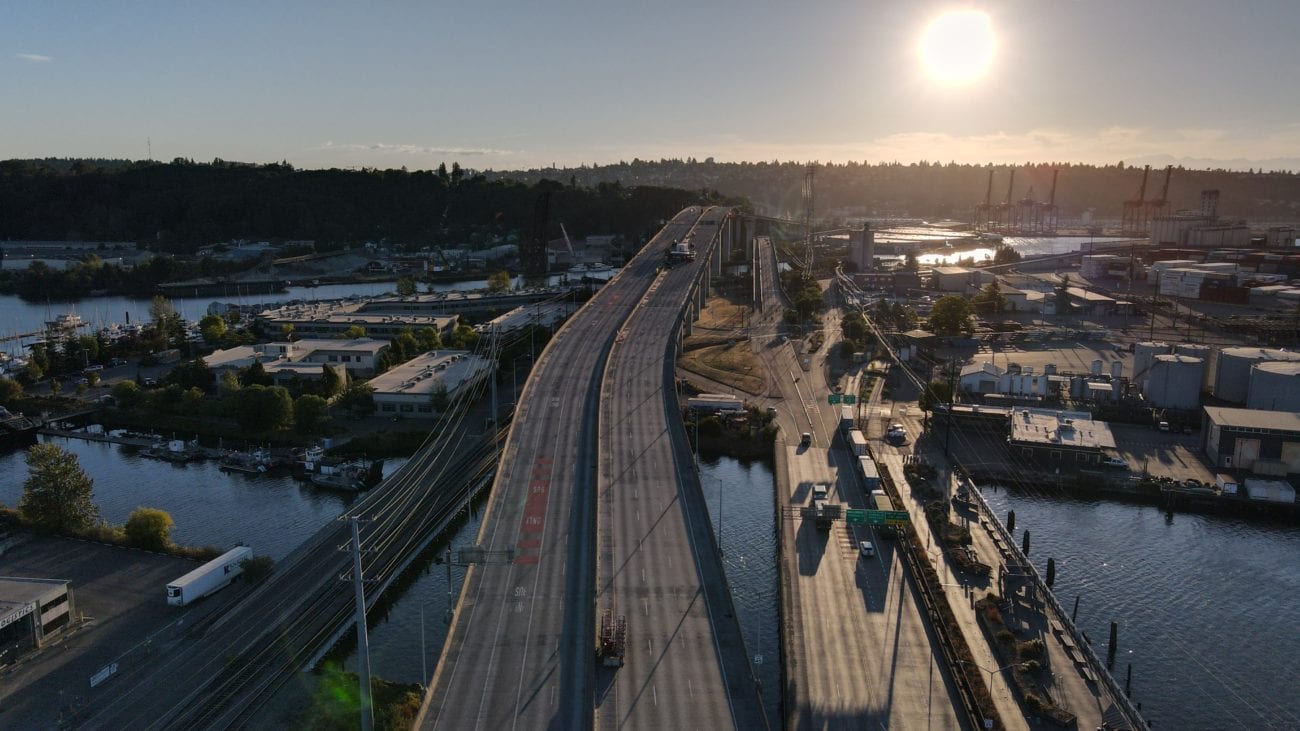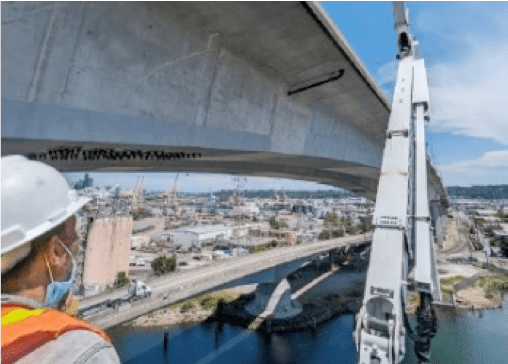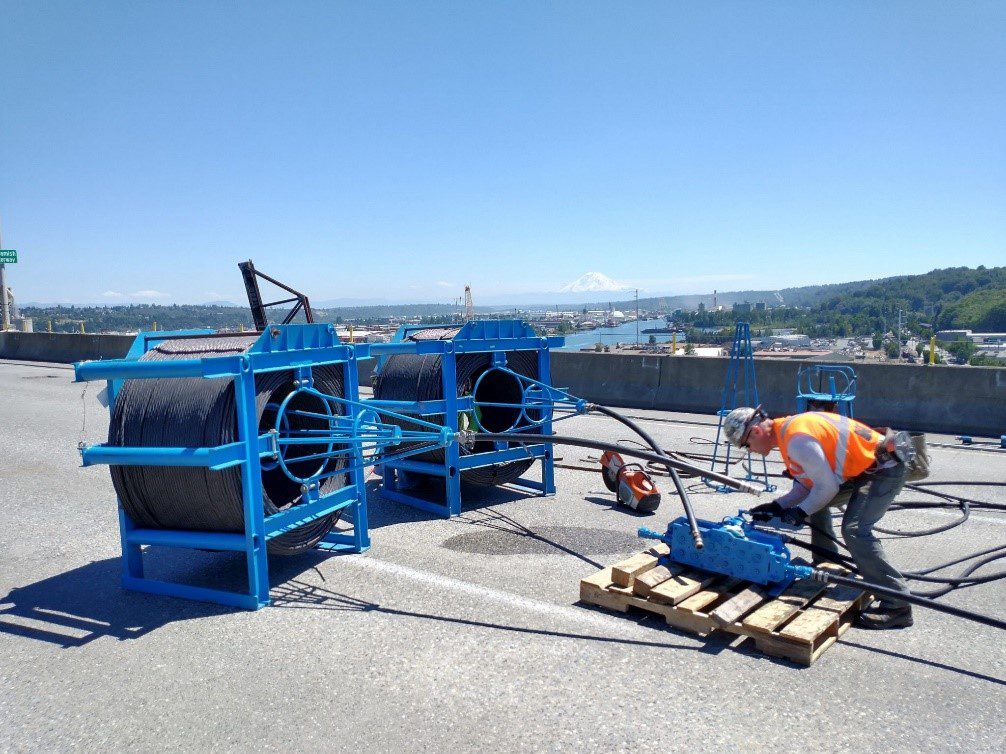 West Seattle Bridge at sunset. Photo Credit: Madison Linkenmeyer
West Seattle Bridge at sunset. Photo Credit: Madison Linkenmeyer At-a-glance
- One year after the bridge reopened, the West Seattle Bridge one-year monitoring report shows that the bridge is performing as expected.
- Since reopening, the bridge has been monitored by the bridge structural health monitoring (SHM) system 24/7, with physical inspections occurring on a regular basis. All monitoring shows that the bridge is functioning as it should.
- Based on the results of the monitoring, the frequency of visual inspections will move to the regular, federally required 2-year cycle for bridge monitoring.
- Thank you to everyone that was impacted during the extended closure of the West Seattle Bridge! We appreciate your patience as we completed this critical bridge rehabilitation work.
On the 1-year anniversary of opening, the West Seattle Bridge gets a clean bill of health.
The West Seattle Bridge reopened to traffic one year ago on September 17, 2022, after being closed 2 ½ years for repair. At that time, the bridge was determined to be safe and strong enough to support the thousands of vehicles expected to cross it each day for years to come. SDOT just released a one-year monitoring report showing that the bridge is structurally sound and performing as expected after extensive observations.
The bridge now includes SDOT’s most extensive, sophisticated bridge monitoring system which allows us to detect subtle movements or any growth of existing cracks. The safety system runs 24/7 and automatically alerts engineers immediately of any issues that would require further inspection. In reviewing the system data over the last year under different traffic and transportation conditions, the rehabilitation and safety measures completed are performing as anticipated.
Over the past year, the bridge has also undergone regular visual inspections of the carbon fiber wrapping and post-tension repair systems, which show no signs of distress. To ensure that all repaired systems were performing as expected, SDOT has conducted these inspections at a higher frequency than is required by the Federal Highway Administration (FHWA) for a bridge after being returned to service.
Based on these results, SDOT will continue to operate the bridge structural health monitoring system at all times and visual inspections will shift back to the 2-year cycle required by FHWA.
Following a year of the bridge’s safe return to service, we are confident that the repaired bridge will stand strong for decades to come, fulfilling its original lifespan. SDOT would like to thank everyone who was impacted by the extended closure of the West Seattle Bridge! We appreciate your patience as we completed this critical repair work.

What repairs were done to the West Seattle Bridge
The repairs to the West Seattle Bridge included nearly 60 miles of steel cables post-tensioned to form the new backbone of the bridge. Each of the cables were anchored into new specialized concrete blocks woven into the bridge and capable of holding more than 20 million pounds of force. The new post-tensioning system works in tandem with other repairs to the bridge, including an extensive network of more than 100,000 square feet of reinforced carbon fiber sheets wrapped inside and outside the bridge walls and over 240 gallons of epoxy injected into cracked concrete.
These repair systems prepared the bridge to handle the weight of vehicles and cycles of seasonal temperature changes. With these repairs complete, the bridge is much stronger than it was before and will last for decades to come.
During the repair process, crews installed permanent inspection platforms inside the bridge’s girders that allow inspectors to examine the structure’s concrete easily. Crews also widened the left shoulder of the westbound lanes so that bridge inspectors are able to get inside the structure for frequent inspections without having to close a traffic lane.
In addition to repair work, we took advantage of the closure to complete other kinds of bridge maintenance work. This work included replacing old expansion joints and sign structures, pouring a new concrete overlay on the Fauntleroy Expressway to the west of the bridge, and repouring worn concrete panels on the bridge’s western approach.
